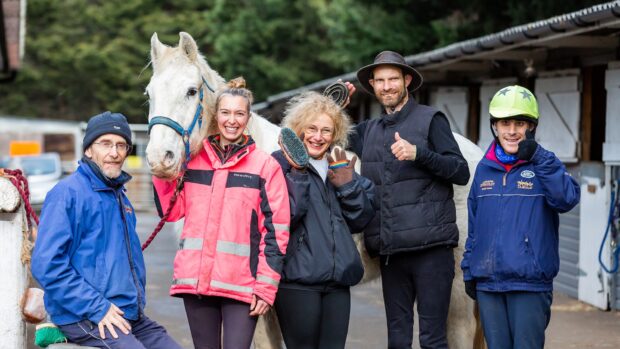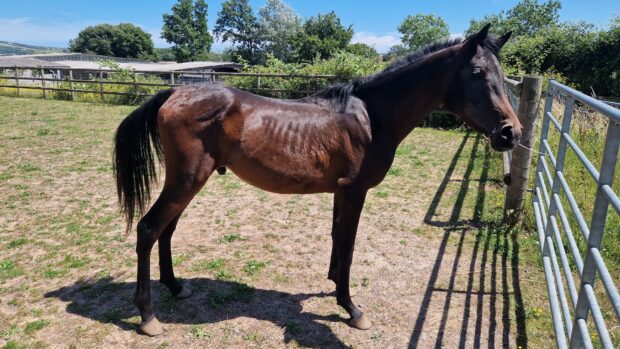The FEI of the future emerged at the federation’s general assembly, which was hosted by the British Equestrian Federation in London last week.
A packed house of more than 350 delegates representing 90 national federations attended the event. It was the busiest assembly in the history of the FEI, with more than 30 meetings held during the six days, and the agenda covered anything from finances to allocating championships and new affiliations — Cameroon was provisionally accepted as a new member, bringing the number of national federations to 134.
FEI president, the Infanta Doña Pilar de Borbón, kicked off the proceedings by asking delegates to “welcome with an open mind the new strategic plan” for 2006 to 2010. The plan, which was presented during the forum and open meetings, had first been conceived at the Rabat General Assembly three years ago to ensure that the FEI would evolve “to reflect the needs of an increasingly commercial professional environment.”
Since then, some 60 people have worked on shaping the federation’s future. They suggested that the FEI grow into a businesslike organisation managed by “qualified professionals and no longer by volunteers.” This entails a radical change of the federation’s structure to become more transparent and accountable.
The plan recommends setting up well-defined, measurable targets for the future. It also identifies the main tasks the federation should concentrate on in coming years, which include representing the sport at both global and continental level, assisting national federations and all equestrian disciplines, developing and controlling sport rules, promoting animal welfare and boosting marketing activities.
To ensure that every FEI member and associate has a say in the decision-making process, the federation intends to put in place a strong internal and external communication plan, which will be funded through new income from TV rights, sponsorships and products. The flow of information will also be rationalised through a single data information system, which will make it easy to disseminate facts and figures among stakeholders, while improving the FEI’s credibility.
Marketing activities play a central role in the future. “The current perception of the FEI as a traditional regulatory administration has to evolve into that of a champion for the sport,” the federation wrote in a statement. The new brand identity, which was introduced earlier this year, is the first step in this direction and will soon be followed by a brand positioning statement with the ultimate aim to raise the FEI’s profile and visibility.
The development of the sport, of course, remains at the core of the FEI mission. To do so, the federation plans to strengthen the existing development department and put in place a development structure, which will work closely with national federations and will employ experts and consultants.
An overarching objective is to strengthen the position of equestrian sports within the Olympic Games by expanding global representation through new national and regional championships and involving IOC and NOC members in important equestrian events. It also intends to ensure that the costs of running the equestrian competitions is affordable for Olympic Games organising committees and will review the current programme to boost TV coverage and reflect “the real status of all equestrian disciplines.”
The welfare of horses is another crucial concern, which was partly addressed through the work of the anti-doping task force when it clarified the distinction between doping and medication, set the criteria for medication control and recommended a new procedure to evaluate doping cases and imparting sanctions. Other initiatives include improving the welfare education of officials and rides, reviewing the veterinary examination and horse inspection system and issuing recommendations on transportation, disease prevention, frequency of competitions and training intensity.
The General Assembly agreed in principle to the plan, which will now pass into the hands of a steering committee for budgeting and refining. Implementation will start next year with a view to kick off with the new structure by 2007.
Provisions for the plan are already in place in the revised budget for 2005 and in the 2006 budget, both of which were approved during the assembly. Among the financial charges approved for next year was a mandatory annual registration for horses and riders in every discipline.
The Olympic Games took centre stage when Hong King was proposed as a venue to hold the equestrian Olympics in 2008. The news had been in the air for several months, but the Beijing Organising Committee last week admitted underestimating the veterinary issue of temporary importing horses into China and presented plans to host the equestrian competitions in Hong Kong.
The proposal found a cold reception, as the general assembly “clearly stated its determination to adhere to the original concept of being located in Beijing.” The final decision on the matter will be taken by the IOC executive board on 19 April.
A number of discussions concerned individual disciplines. Earlier this year, it transpired that the FEI was considering rebranding eventing as equestrian triathlon in an effort to broaden its appeal. As expected, the Chairman of the Eventing Committee asked national federations to suggest alternative names for the sport, which will then be independently reviewed.
Dressage was in for a subtler but equally sweeping change when, at the end of an intense round of debate, delegates voted in favour of reducing the Olympic dressage teams to three members to allow more nations to participate. The proposal will now be put forward to the IOC. Dressage riders will also have rights to re-inspection in case of doping, much like it happens with show jumping.
The General Assembly was also told that, during the Dressage and Show Jumping World Cup Final in Las Vegas, innovative methods to control and pursue the research on hypersensitisation will be in place.
The week-long meetings culminated in the FEI annual award ceremony, which was held in the Painted Hall of the Old Royal Naval College. Among the winners was triple Paralympic Champion Lee Pearson, who was recognised for his fair play because at the Paralympic Award ceremony in Athens last summer he presented a bouquet of flower to French rider Valerie Salles, whose horse had died when entering the arena for the individual dressage competition.
Two other Brits were honoured during the British Equestrian Federation Welcome Dinner at Whitehall Palace’s Banqueting House. John and Lisa Hales, the owners of Nick Skelton’s Olympic mount, Arko III, won the first FEI Owner of the Year award, which recognises the most successful owner in jumping.
The next FEI General Assembly will take place in Kuala Lumpur next year, in conjunction with the FEI World Cup Jumping Final.


